CPU Torture: Prime95 Small FFTs
What Furmark and the MSI Combustor are for the GPU, Prime95 has been representing for the CPU for years. A true classic, but it has evolved over the years. Current versions support the latest AVX command sets, creating thermal overloads that have washed back. However, not everyone will want to swing this extensive AVX heat leg, so that many users either change the AVX offset in the BIOS or change the AVX offset. googling to older versions of the software.
Today, however, we are looking forward to the extreme test and want to see how far you can go with the CPU part if the graphics unit is not loaded. This also gives us information about possible limitations and balancing between the units.
AMD Ryzen 3 2200G
First of all, let's stress the smaller APU. With just over 80°C, the Boxed cooler now has a certain nut to crack, because with the power consumption it now goes up steeply, as expected. With approx. 54 watts in average and up to approx. 67 watts in the tip you scratch at the indicated TDP, but still have air up.
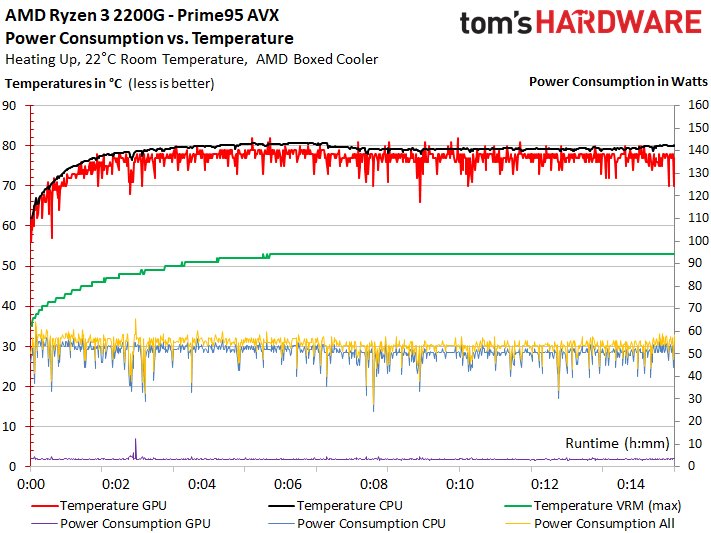
The graphics unit is bored at just under 220 MHz, while the CPU cores are almost stable at approx. 3.65 GHz sweating.
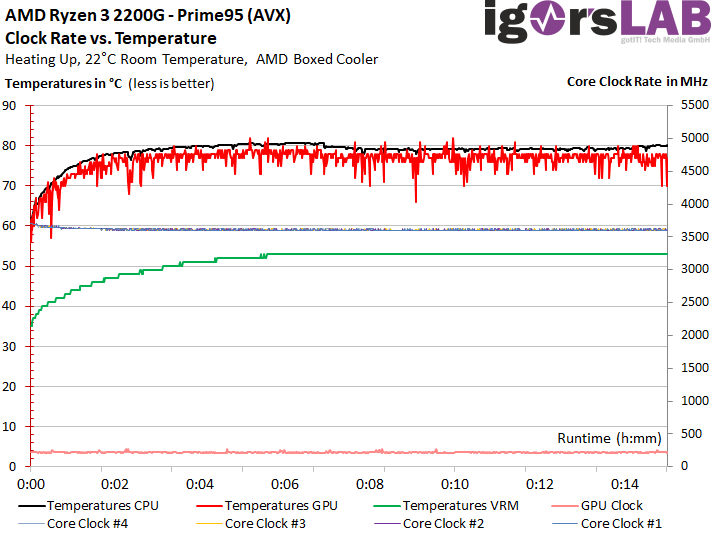
AMD Ryzen 5 2400G
The price is hot, at least with the larger APU. With up to 85°C, the Boxed cooler finally gets a real task, but manages to do so just as it can be audible. With 76 watts on average over 15 minutes and up to 83 watts in the lead, you now exceed the tpp of 65 watts quite significantly. However, AVX is not something you need (all) every day, but we just want to test the maximum value. And there is nothing better for that.
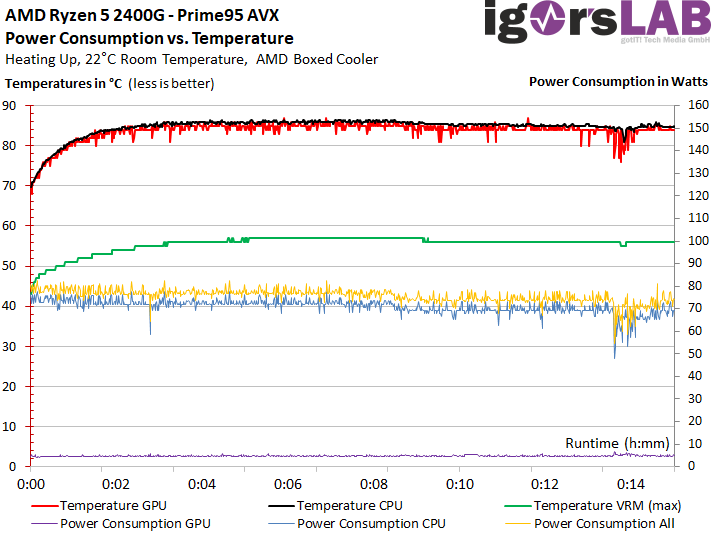
With the rising temperature, the CPU clock also drops a little, whereby the difference from the initially reached 3.75 GHz to then "only" still 3.7 GHz is almost unnoticeable.
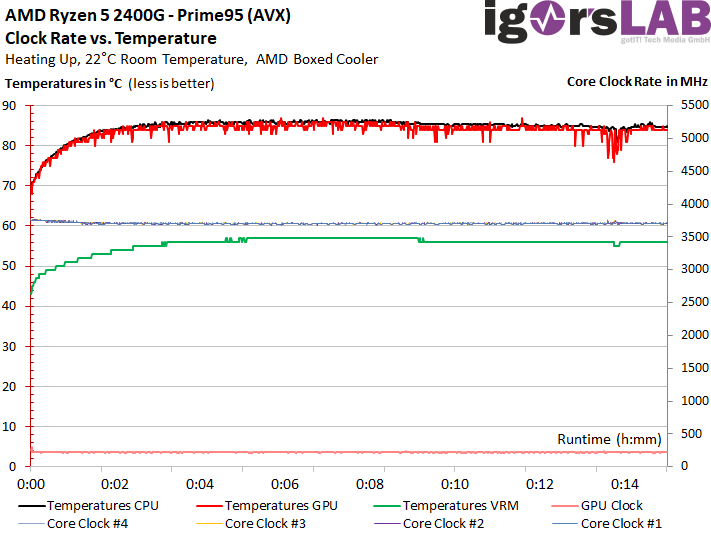
GPU Torture: MSI Combustor Core Burner
The "combuster" from MSI even puts a certain amount of skid on top of the loads and is also much more flexible in terms of the selection of possible tests. In general, the "combustor" applies that one should only select the screen resolution so high that a largely smooth output is achieved. What moved us to this other extreme is that we can now stress the graphics unit on its own and find out what performance it absorbs almost on its own.
Why we are testing only more than half of the 15 minutes set so far is quickly justified. At the latest with the larger APU, we became aware of a phenomenon that has already been 4 minutes occurs and we have decided to use fewer measuring points for the better display of the curves. The full warm-up is already complete in this section.
AMD Ryzen 3 2200G
With an average of approx. 38 Watt, the smaller of the two graphics units is nevertheless quite economical when viewed alone. This is also reflected in the maximum temperatures of 51°C for the APU and 56°C for the hottest voltage converters.
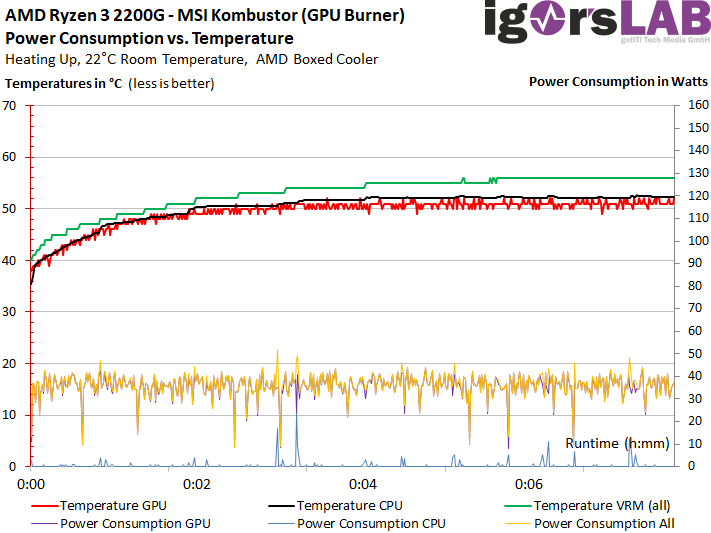
The GPU's 1100 MHz can also be held despite full load; not bad for such a stress test! The sporadic spikes of the CPU go down in the background noise. At least with this APU, we do not see any changes in clock behavior over the time period tested.
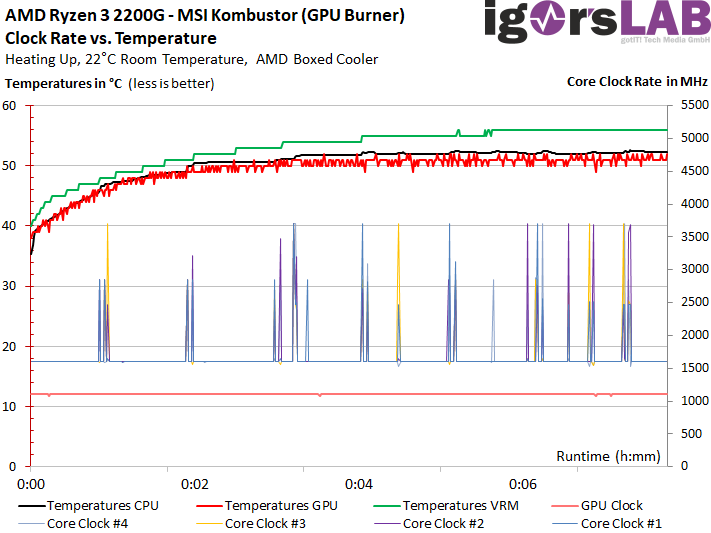
AMD Ryzen 5 2400G
Let us now turn to a behavior that as such can hardly be explained by the possible metrics and which has not been explained by AMD, despite demand. However, MSI as the second motherboard manufacturer has always been able to safely reproduce this behavior with another motherboard and other APUs of this model, so that we can also completely exclude a coincidence or individual case.
The total power consumption is a rather moderate 44 watts on average and the maximum, short-term peak only occurs after the effect, which acts like a kind of throttling. However, a thermal throttling should be excluded, because the average is only 52°C and the approx. 60°C in the tips is nothing that would give a reason for a limitation. We are therefore more likely to tap on a kind of trigger that is performance-related (e.g. a certain maximum current over a certain period of time).
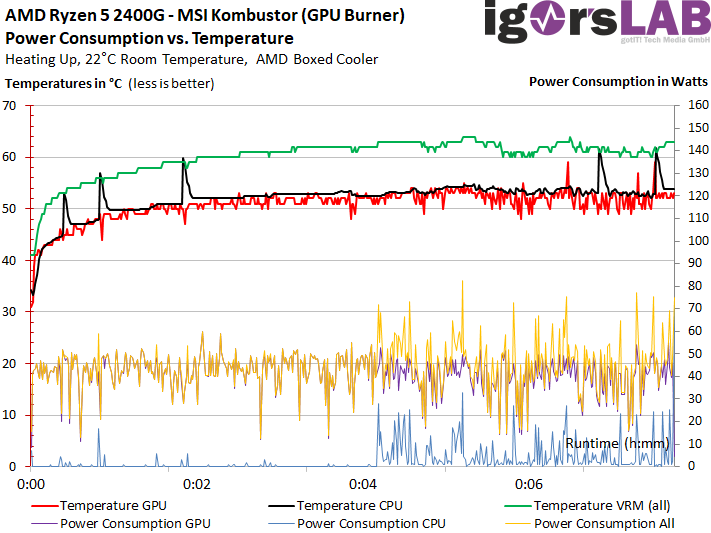
But we also see it in the very extreme rashes in the CPU clock, which are actually justified by nothing really. There is no unexpected CPU load in the benchmark, nor have any programs been additionally started. Both the occurrence of this effect and the timing could be reproduced in a stable manner. We already wrote that MSI was also able to prove this behavior, albeit always a little later in the course.
What was really annoying, however, is the fact that this type of limitation was not deactivated again even after the end of the stress test and longer time in the idle, but the entire system had to be completely restarted in order to restore normal clock rates and a normal to achieve clock behaviour. It only appeared on the Ryzen 5 2400G, but on all tested specimens.
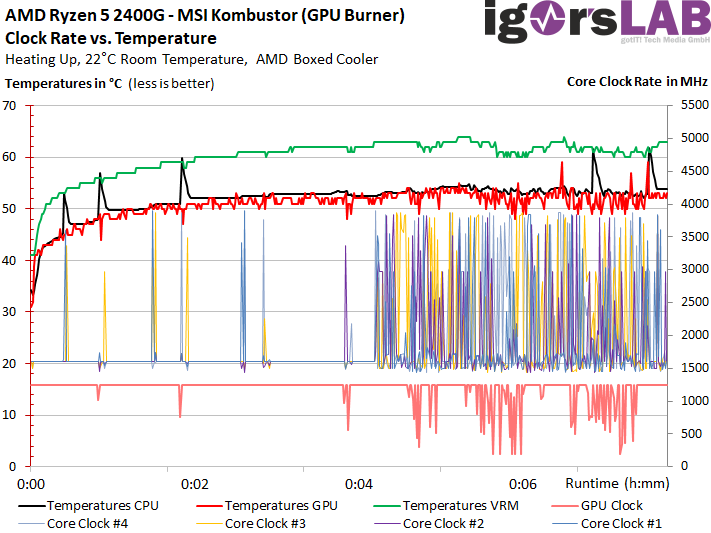
Intermediate conclusion
The distribution of the maximum possible loads between the CPU and GPU sub-areas does not work badly, even if, as with the larger APU, an unexplainable behavior could be detected. We would like to point out explicitly that this type of "throttling" did not occur in games or normal applications, but did occur during the stress test of the GPU and some GPGPU applications or rendering and encoding with the GPU.



















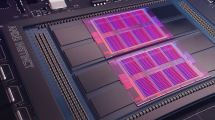












Kommentieren